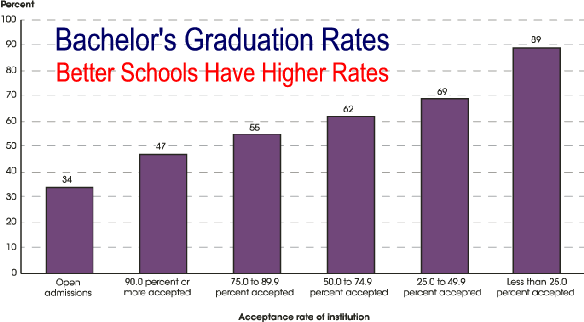|
1Source
|
 |
|
Presidential Issue #3 Is Financial Aid Welfare
|
|
|
President Obama's education policy
originally directed toward
college in general and two-year colleges in particular has been changed to correctly include vocational education. |
Please |
| Return to Education Libraries | |
|
Aid For the Wealthy
Four year
American Opportunity Tax Credit
Eligible student include individuals and a spouse or dependent claimed as an exemption on a tax return. Maximum annual credit of $2,500/student for those with modified adjusted gross individual income of $80,000 or less and $160,000 or less for married couples filing a joint return. The credit is phased out for taxpayers with incomes above these levels. Forty-percent is refundable so taxpayers not owing taxes can get up to $1,000 in cold cash or hot cash depending on you outlook. Lifetime Learning Credit $2,000 for qualified education expenses paid for all students enrolled in eligible educational institutions with no limit on the years so this is particularly helpful to graduate students, students who are only taking one course and those who are not pursuing a degree. Did this extend the traditional bachelor's degree from six years to seven, eight ... |
Aid For the Not So
Wealthy PELL Grants of up to $5,775/year depending on Financial Need
A few years ago I stopped by Lake County CC in Leesburg Florida and
asked three questions.
How much is a Pell Grant. What is fulltime tuition?
Answer is $92 per credit so 24 credits =
$2,208 per year. Spending money (most students don't
buy books and live at home is $3,292 per year or $63 per week. It's about
$100 per week if you exclude summers or go just one term. A 2015 credit
cost is $107 so 24 credits cost $360 while PELL is up $275. Taking one
less course or spend less or work more. Federal Supplemental Education Opportunity Grant of $100 to $4,000 are administered by approved schools depending on need. Work Study is hourly work administered by schools. |
|
Many of these students are attending school for the money and quickly drop out and keep the grant money. Others try, but since the programs are designed for the most academically gifted, many get poor grades. These students stick around for something to do and spending money with little chance of failing because teachers have many reason for not flunking them. |
A 2010 USA Today story about the high cost of college drop outs from four-year schools.
It seems state appropriated funds of 6.4 billion dollars from 2003 through 2008
to educate students at four-year schools for students who did not return for
their sophomore year.
In addition, state and federal grants of 1.4 and 1.5 billion dollars
went to students who did not return for their sophomore year.
I decided to see how some colleges I had been associated with in relation to completion rates and here is the result. |
|
Completion Rates For Schools of
Interest |
|||||||
| School I Know About |
Harvard where sister graduated |
University of NH where
I live |
Saint Anselm local private school in NH | Marietta College, Ohio where I graduated |
S N H U a local private school |
Franklin Pierce University where I worked | |
| Goal | Strategic Measure | ||||||
| Completion and Progression | Graduation Rate | 96.8% | 73.5 | 71.0 | 56.1 | 50.1 | 41.3 |
| First-year retention rate | 97.0% | 89.0 | 85.0 | 73.0 | 73.0 | 62.0 | |
| Efficiency | Cost/student (FTE) | $86,239 | 12,680 | 23,127 | 21,146 | 13,479 | 17,072 |
| Productivity | Cost per degree | $276,042 | 52,769 | 105,190 | 92,200 | 32,894 | 68,887 |
| Cost of attrition* | $4.3m | 3.7m | 2.0m | 2.4m | 1.9m | 3.4 | |
| Gainful Employment | Student loan default rate | 0.6% | 1.1 | 0.2 | 3.6 | 2.7 | 4.0 |
| Ratio of student loans payments to earnings per recent graduate** | 1.0% | 5.8 | 8.3 | No Data | No Data | 6.4 | |
| * Amount spent by the college to educate first-year
undergraduate students (first-time, full-time) who did not begin a
second year. ** Median starting pay data presently available for 949 of the 1,576 colleges featured on this website. |
|||||||
Editor's Note: While data shows that AA graduates earn about 50%
more
than HS graduates, recent data indicates that first-year top AA earners
make about
$40,000 and those at the bottom less-than $20,000 annually.
Source
Presidential Issue Is Investing in College Worthwhile
|
Thanks!
Walter Antoniotti, creator of the
Free Internet Libraries,
textbooksfree.org/,
author of the free
Quick Notes Learning System
books series, and President of
21st Century Learning Products which enhanced his extensive college
admissions experience with an education concerning the college book business and
home schooling.